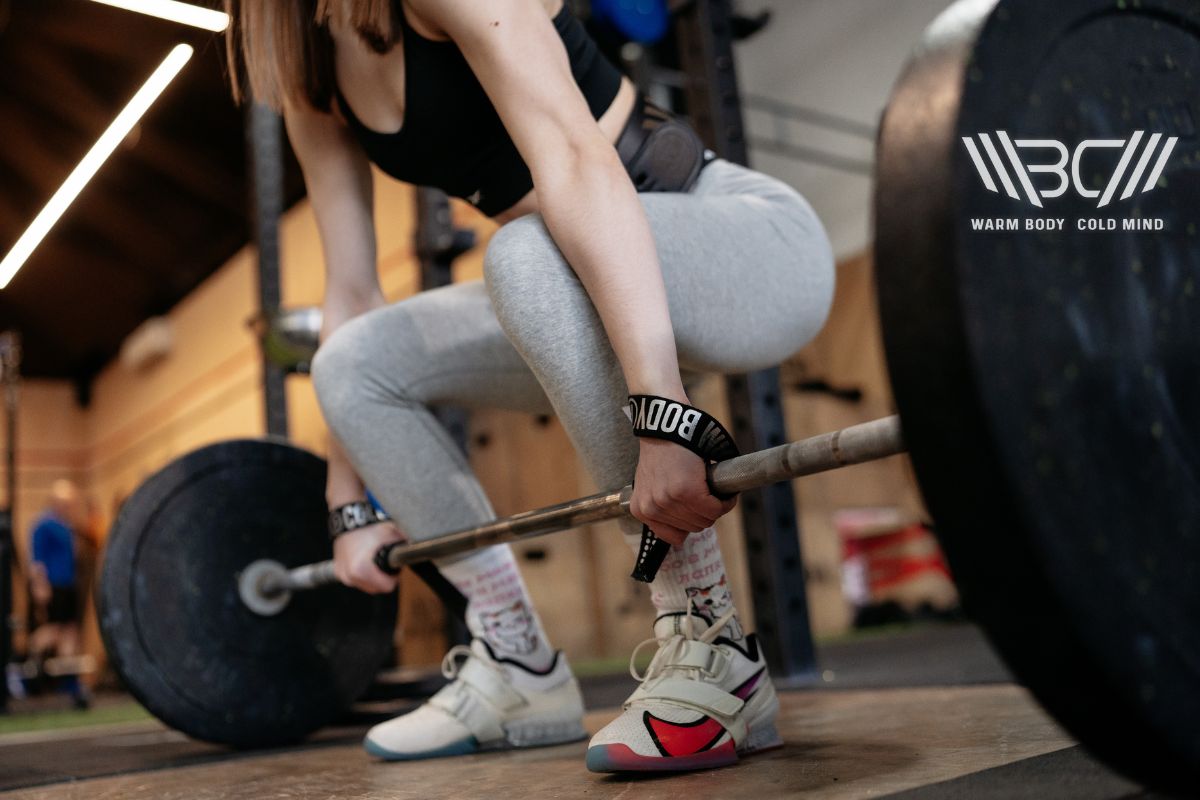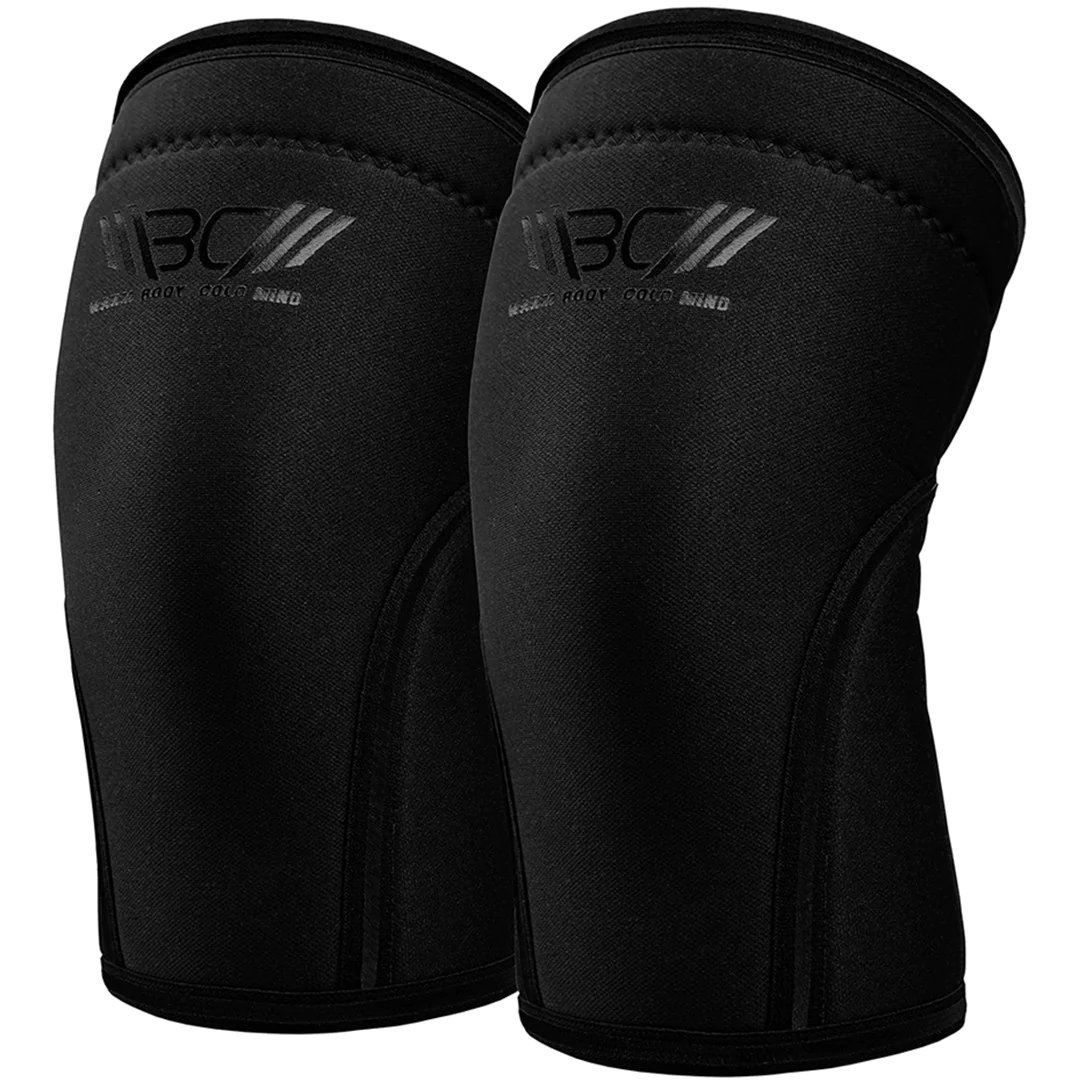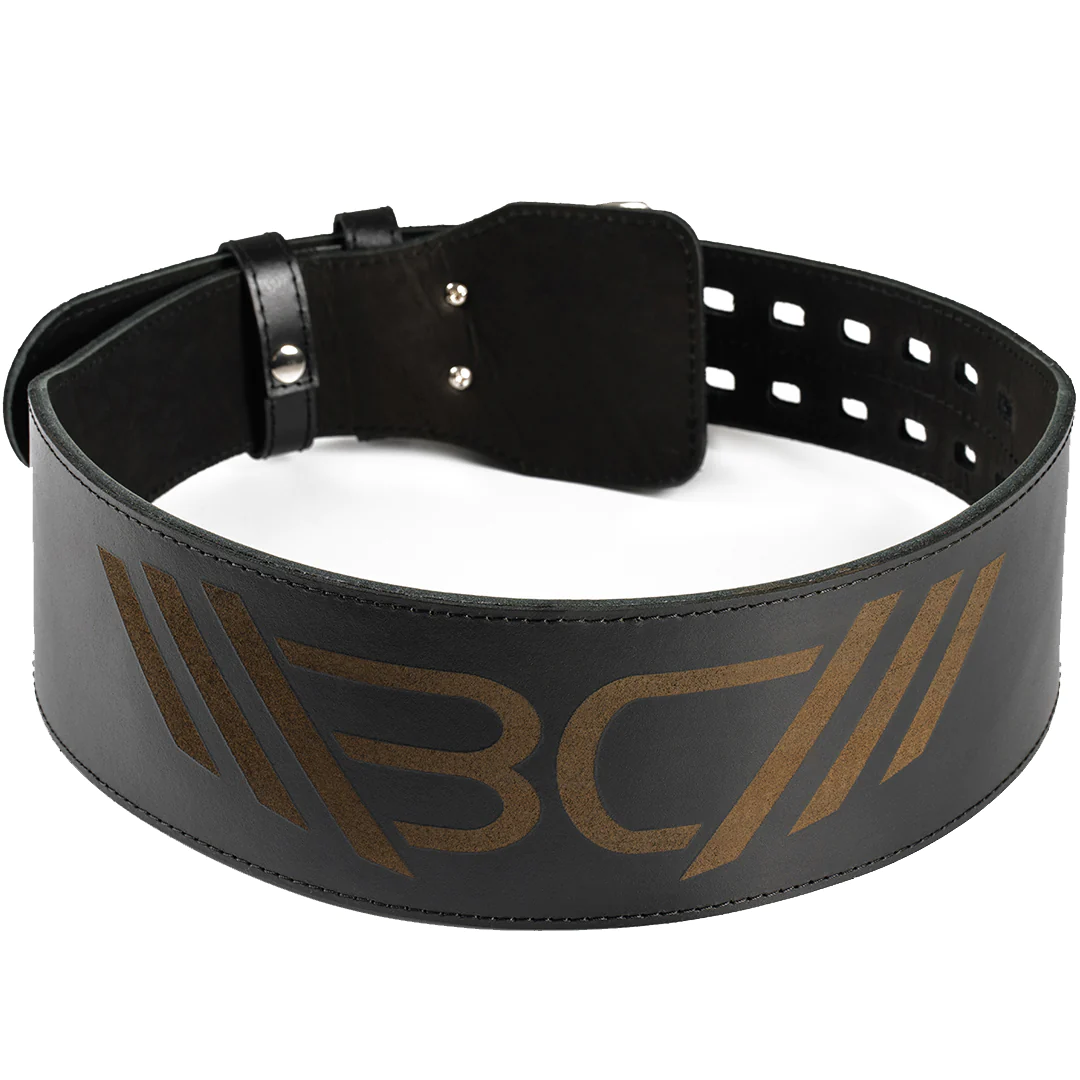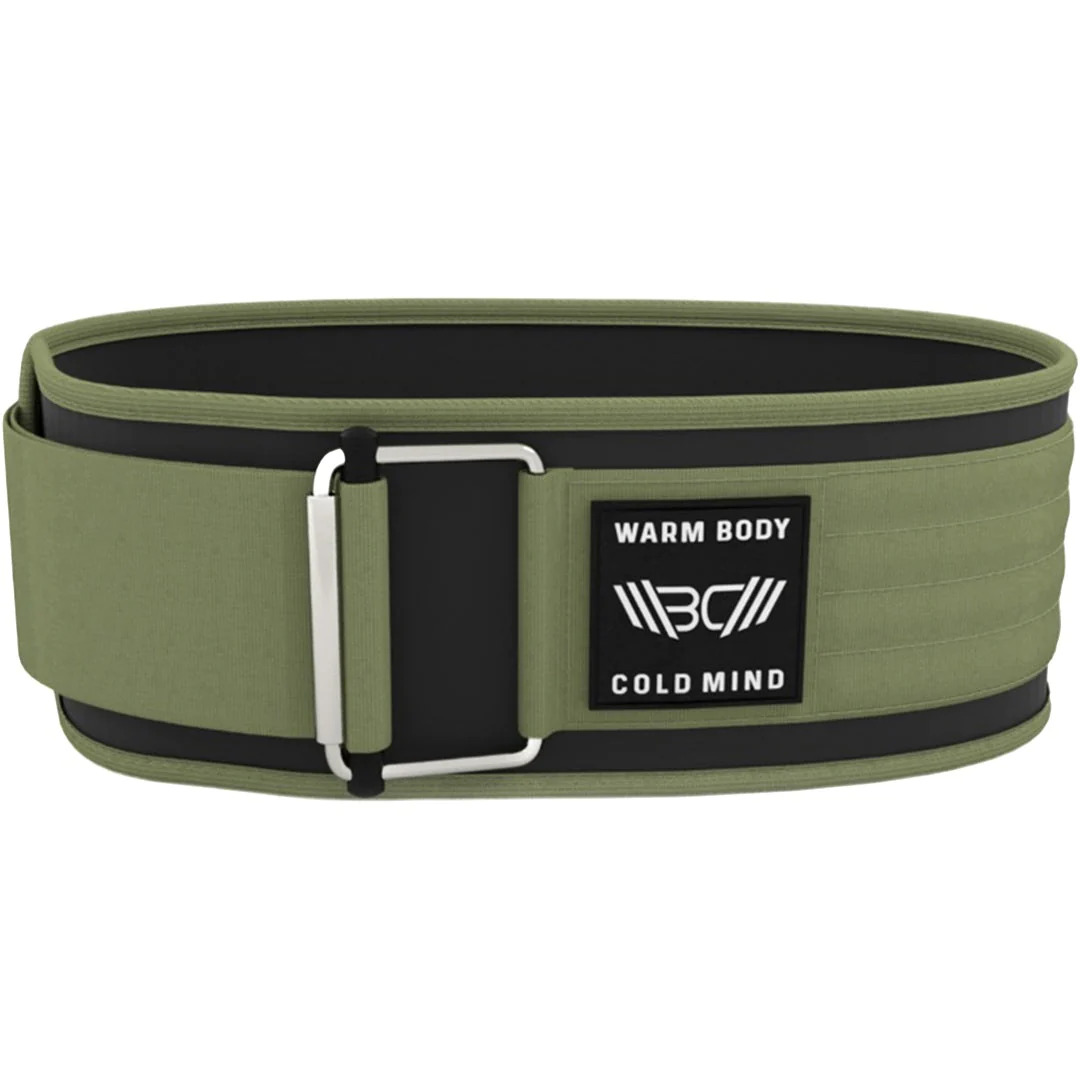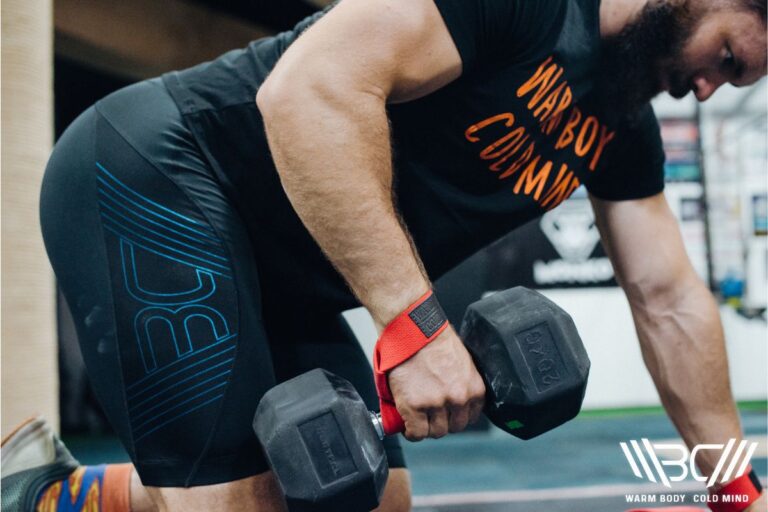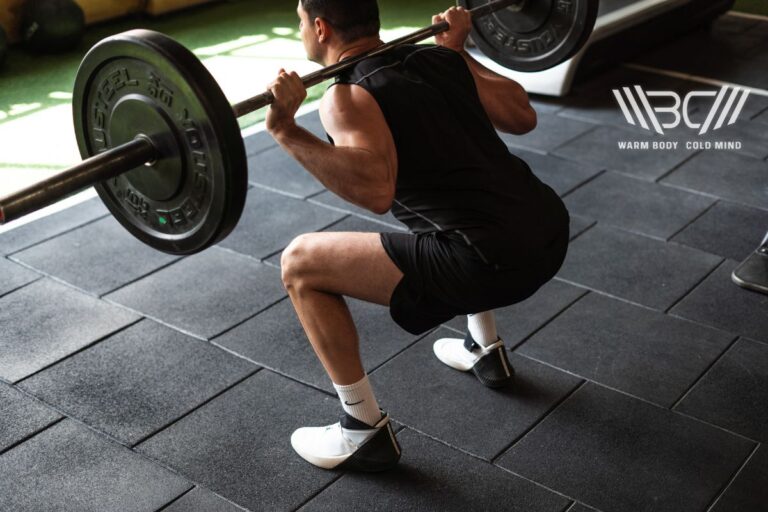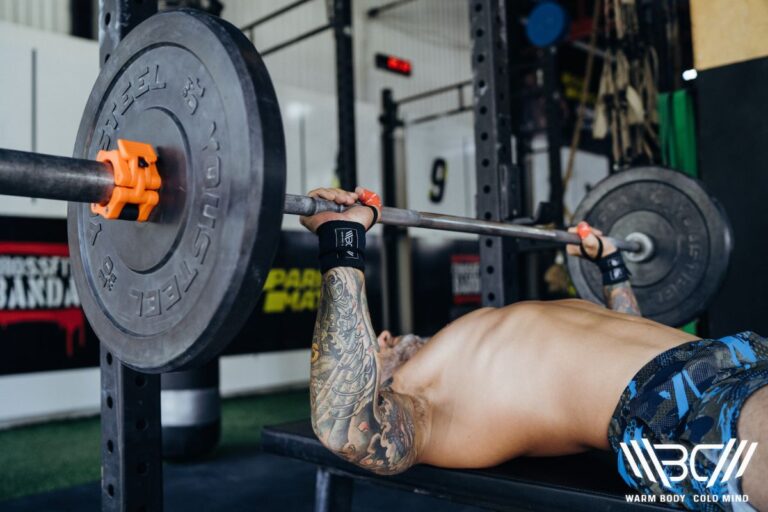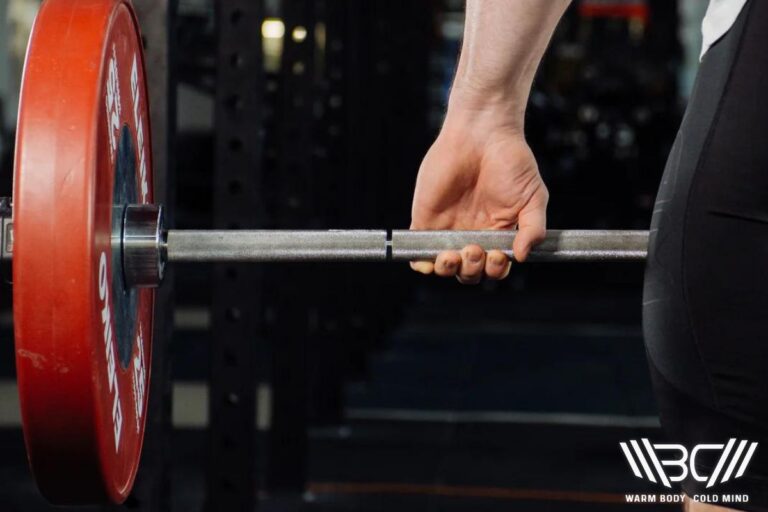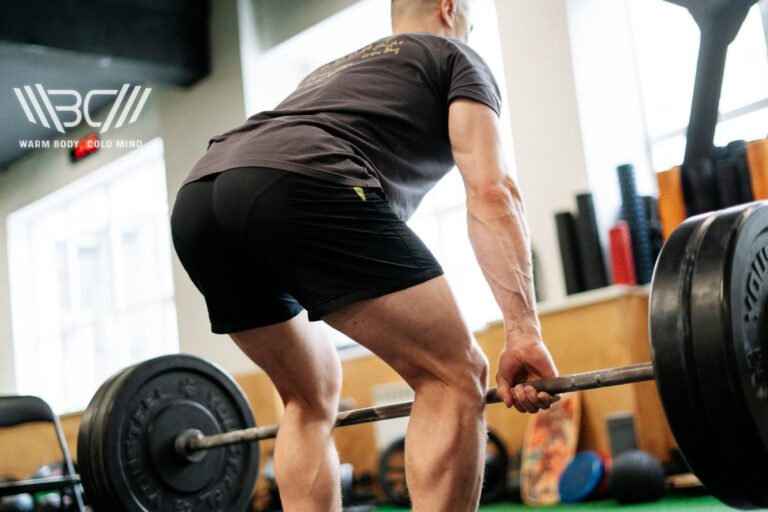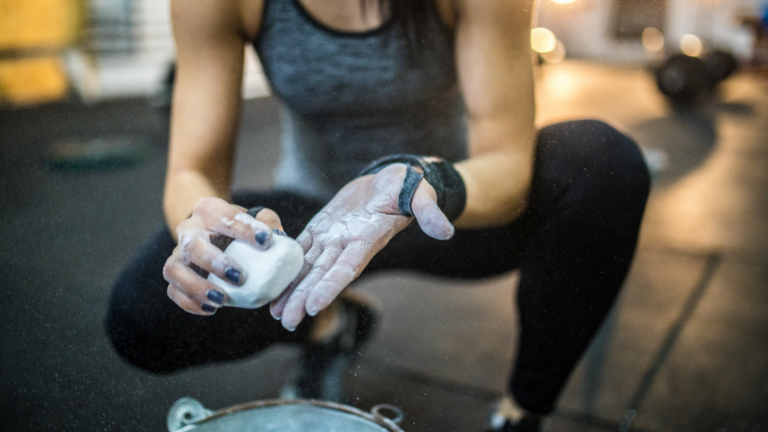Should You Deadlift On Back Or Leg Day, Or Both?
People who want to incorporate more weightlifting into their workout routine often ask: is the deadlift a back exercise, leg exercise, or both? The short answer is, both, but the intricacies can differ between variations and approaches. So, should deadlift on back or leg day? Let’s find out.
You can do deadlifts on back or leg day. Preferably, do deadlifts for legs or back training before isolated exercises. After deadlifting, always leave a few days before your next leg or back day. So, if you deadlift on a back day, rest 3-4 days before a full leg day.
Deadlift: Is It A Leg Or Back Exercise?
Is the deadlift a back exercise or a leg exercise: a common question coaches get from beginner lifters. However, looking at it as one or the other is the wrong approach to this popular exercise. Deadlifts are a compound exercise, which means multiple muscle groups are working simultaneously to successfully complete the move.
Deadlifts are often called the “King Of All Exercises” because they’re the closest thing to a full-body exercise, requiring a great deal of work from your lower, middle, and upper body. The four primary muscles worked by deadlifts include the Erector Spinae (long spinal muscles), Vastus Lateralis (quadriceps muscle group), Biceps Femoris (hamstrings muscle group), and Gluteus Maximus (buttocks).
So, it seems that with three out of four primary muscles being leg muscles, the deadlift is a more leg-focused exercise.
However, the secondary muscle group worked by deadlifts is nearly all about the upper body. These include our core muscles (abs, obliques, etc.), Latissimus Dorsi AKA lats (middle back), Trapezius AKA traps (upper back), and forearms (which by themselves contain 20 smaller muscles).
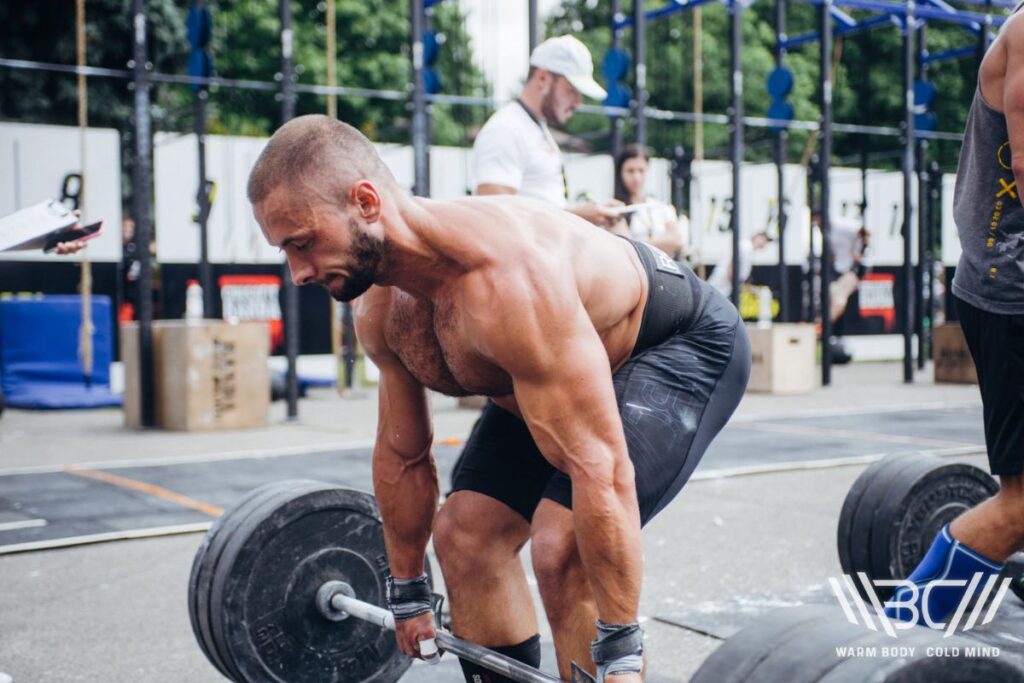
So, the deadlift pretty much goes through activating the entire back, too. This is why competent coaches recommend deadlifts for legs or back days, incorporating slight variations to the exercise to better hit desired muscle groups.
Deadlifts also passively work your Gastrocnemius (calf muscle group) and Deltoids (shoulder muscle group). These muscles are not actively engaged in driving the weight, hence why we call them passive, but they’re fundamental for providing stability in the legs and shoulder grid respectively, preventing you from collapsing.
Should You Deadlift On Back Or Leg Day?
So, should I deadlift on leg or back day? This entirely depends on how often you wish to deadlift and what your general training plan is like (number of days, how you select exercises, what other physical activities you do, etc.). Here are some general guidelines that should help you.
Since the deadlift is highly demanding both physically and mentally, it’s often recommended to either focus on deadlifts as your sole exercise of the day, surrounding it with supportive warmups and post-exercise rest, or do it early on in the workout. That way, you go into it with full energy and focus and without muscle strains from previous exercises, minimizing the risk of injury.
But don’t worry, we won’t cut you off the answer. In the following segments, we’ll do a more detailed comparison of both exercises. That should help you decide if you should be focusing on deadlifts for back or legs:
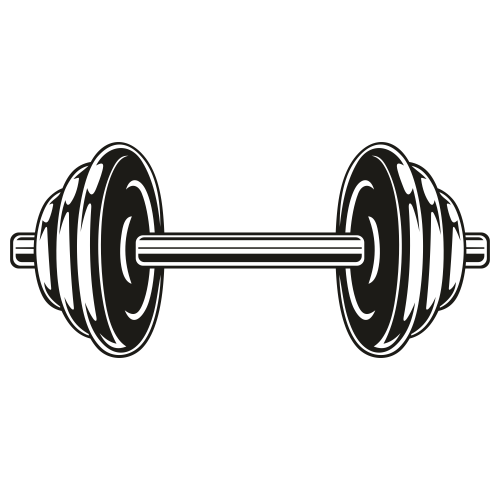
Pro Tip:
Adequate rest after deadlift sessions is crucial for recovery and optimal muscle adaptation. If you choose to deadlift on one day, you should leave at least a few days to cool down before you attempt your next full back or leg day workout. So, use this to plan your weekly/monthly workout regimen.
Deadlift On Leg Day
First, let’s talk about deadlifts as a leg exercise. We’ve already mentioned in the intro how deadlifts heavily target lower-body muscles. Based on that, should I do deadlifts on leg day, you may ask? Let’s look at the pros and cons of doing so to see how it fits you specifically:
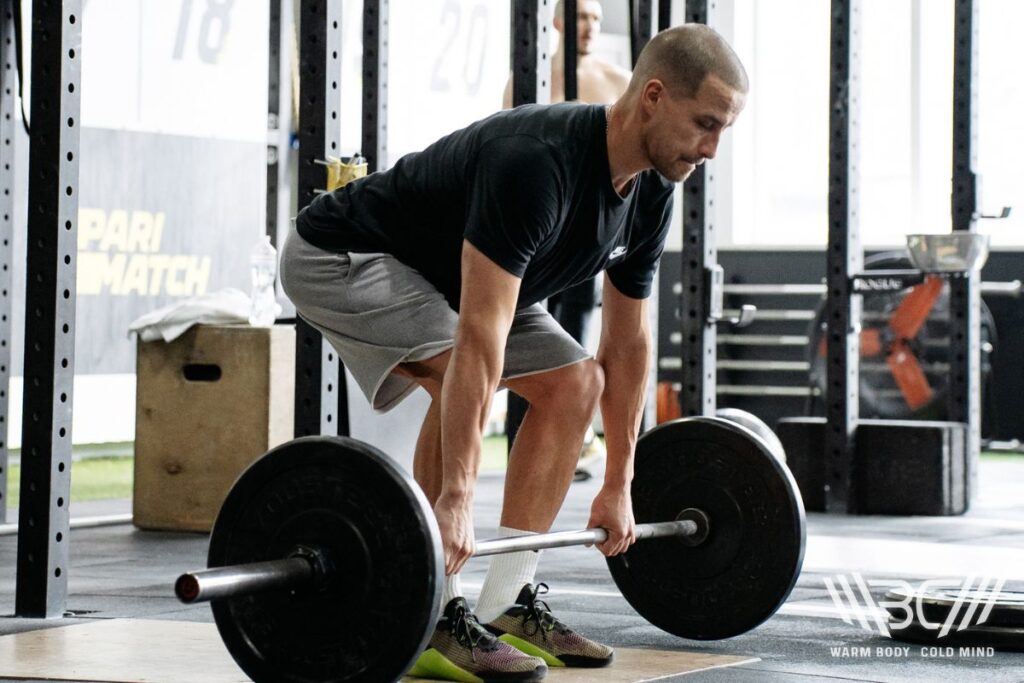
2 Benefits Of Deadlifting On Leg Day
✅ Time Efficiency
Compound exercises like the deadlift are highly time-efficient. Why waste your time with 4-5 different leg machines at the gym when you can do deadlifts and hit your hams, quads, and glutes all at once? This is especially useful if you’re short on time, the gym you go to is crowded, or you simply want to train with a timeframe in mind.
✅ Transferable Performance Improvement
Whereas isolation leg exercises are good for muscle strength and growth, as a compound movement, deadlifts develop functional strength and power output that improve your physical performance. This is especially useful if you participate in other sports or do other physical activities where power from your legs is paramount, or if you want to improve your general athleticism.
For example, in a study done on football players, incorporating deadlifts in their training regimen had positive effects on their vertical jump, running speed, and agility.
Subscribe!
The latest reviews of must-have home gym training equipment, apparel, and supplements that will enhance your performance and bring you new results.
2 Drawbacks Of Deadlifting On Leg Day
Deadlifts are great for legs — confirmed — but it’s not all positive. Here are some possible concerns when trying to incorporate deadlifts into a leg routine:
❌ Back Strenuous
The obvious drawback that comes with deadlifts is the stress placed on your lower back. Not only is it a problem due to injury concerns, but it can also be a limiting factor in how much weight you can work with. If you want to do an exercise that will give a similar leg workout as the deadlift minus the back strain, the leg press is a great alternative.
❌ Squats Are Better (For Legs)
Speaking specifically as a leg exercise, squats offer pretty similar leg development as deadlifts, with an added emphasis on the quadriceps and less stress on the back. Squats are often regarded as the best lower-body-specific exercise due to their compound nature. So, your choice between squats and deadlifts for leg day will almost always be squats.
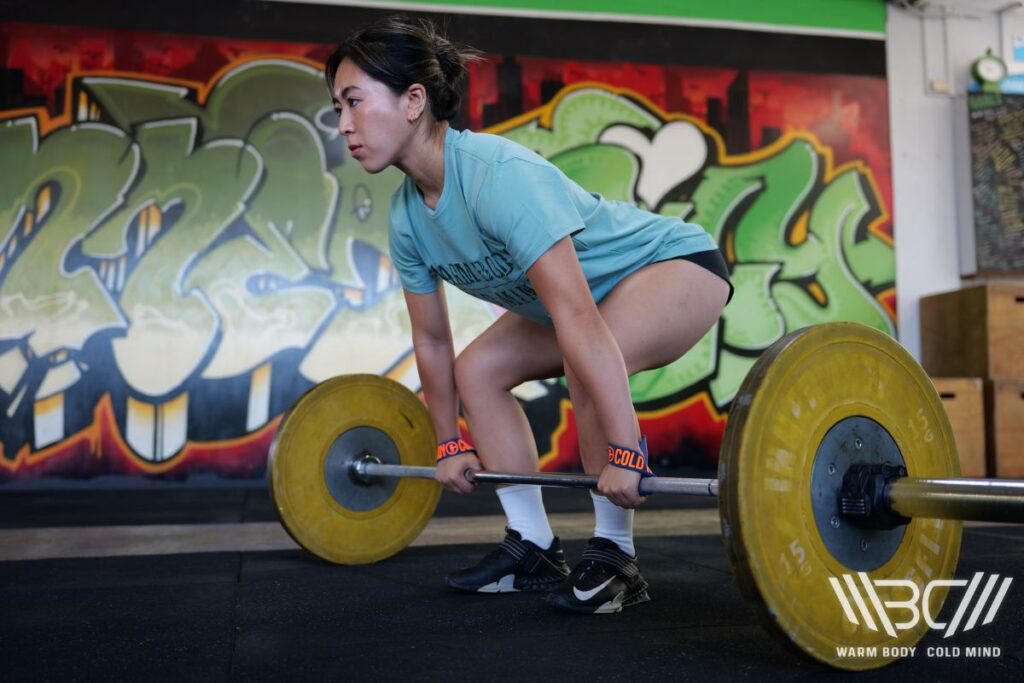
2 Leg Focused Deadlift Variations
Deadlifts are great because you can make small adjustments to better hit your desired muscle. If you want to incorporate deadlifts into your leg workout, here are the variations worth considering.
1. Sumo Deadlift
Sumo deadlifts are often mentioned when someone wants a more leg-oriented deadlift. In Sumo deadlifts, the stance is wider, the toes are pointed outward, and the grip is narrower. The result is slightly higher engagement in the majority of leg muscles but less stress on the back and forearms.
If you want an even harder hit, squeeze your buttocks and quads at the height of the exercise and you’ll feel the difference in muscle engagement.
2. Romanian Deadlift
The Romanian deadlift, or RDL for short, is a common deadlift variation when you want to put emphasis on the hamstrings and glutes and reduce stress on your back. Since the exercise is done in a more upright position and you never lower the barbell down to the floor, it removes the major sticking point of actually lifting the weight off the ground.
A big percentage of deadlift failure and subsequent spine injuries come from collapsing during the initial lift. So, by removing this problem with the RDL, it can be argued the average lifter could do more reps and thus get more leg engagement.
How To Add Deadlifting In Leg Day Training
A single day of deadlifting can nearly replace an entire leg workout routine. Not only is it excellent for targeting various lower-body muscle groups, but it’s also highly time-efficient. This makes it much easier to push through physically and mentally than the notorious leg day.
For this reason, even people who don’t typically weightlift incorporate deadlifts every so often. That said, if you’re going to do deadlifts, it’s best to do them on a separate day, especially if you’re a beginner.

7mm Weightlifting Knee Sleeves
Discover the ultimate support with Warm Body Cold Mind knee sleeves providing stability and comfort.
When deadlifting on leg day, it’s highly recommended you use knee protection. Many weightlifters opt for knee sleeves due to their compression effect, which can strengthen the joint, stimulate blood flow, and reduce fatigue. We recommend our Warm Body Cold Mind 7mm Knee Sleeves.
Professionally designed from decades of weightlifting experience, the anatomical design provides the right amount of compression. Between three color options and sizes ranging from S to 3XL, anybody will fit in these.

Pro Tip:
It’s also important to know why you’re training to choose the right amount of sets and reps. Research suggests that 2-4 reps of high weight are best for maximal strength gains, while 8-12 reps of moderate weight are best for muscle growth.
Deadlift On Back Day
Deadlifts demand high upper-body engagement. So, is the deadlift a back exercise capable of replacing an entire back day workout? Let’s see
2 Benefits Of Deadlifting On Back Day
Here are some key reasons why you might want to do deadlifts for your back:
✅ Improved Posture
Deadlifts target the posterior chain muscles and back. The erector spinae in particular is a long muscle supporting nearly the entire spine length. As such, doing deadlifts strengthens your spine and promotes a more upright stance, which can fix your posture.
✅ Best Lower Back Exercise
Deadlifts are the king of lower back exercises. In a world where more and more people are occupying sedentary (desk) jobs, lower back pain has been a rising health concern globally. If you’re generally healthy but experience back pain from lifestyle-induced reasons, deadlifts have been shown to relieve symptoms of back pain.
Just remember that this doesn’t account for injuries or chronic health conditions and that any type of exercise as a form of rehabilitation should only be done after consulting a professional.
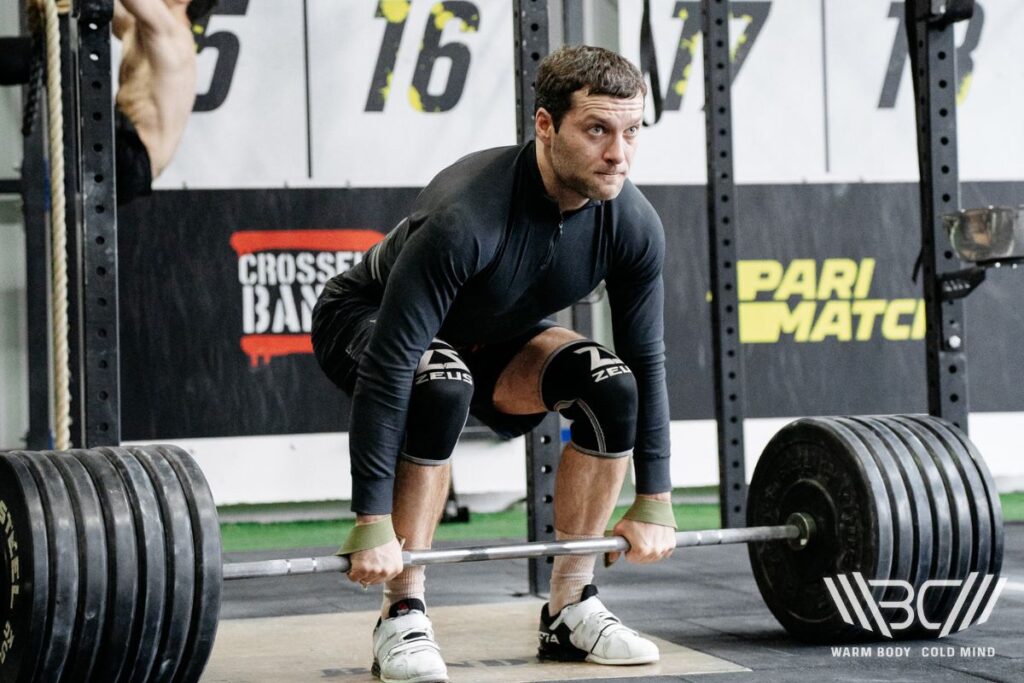
2 Drawbacks Of Deadlifting On Back Day
Here are some potential concerns about adding deadlifts to your back day.
❌ Less Safe
It’s generally true that a complex exercise like the deadlift is less safe than isolation exercises on gym machines. But in the case of back training, this is an especially important point of consideration. Deadlifts are notoriously strenuous on the spine, which can leave it weak and exposed to injury if you then go on to do other back exercises immediately after.
For this reason, experienced weightlifters will almost always use a weightlifting belt when deadlifting, especially if they go above their 70% personal maximum (1PR). Weightlifting belts increase your intra-abdominal pressure, reducing compressive forces felt on the spine.
If you’re going for low-rep, high-weight deadlifts we highly recommend the Warm Body Cold Mind Leather Weightlifting Belt. We made it from genuine A-grade leather that gives it durability as well as the traditional look and feel.
The double-prong stainless steel buckle is virtually unbreakable and safely secured to the belt with four strengthening bolts. Between six sizes, each featuring 10 holes for adjustment, everybody can find their size.

Enhance your strength training with Warm Body Cold Mind leather weightlifting belt providing exceptional support and durability.
❌ Not As Effective (For Upper Back)
As mentioned earlier, apart from the lower back, most of the upper-body muscles targeted by the deadlift are secondary. This means they’re not as active during the initial liftoff, where most of the exercise effort is focused. As such, it could be argued that people who do back days at the gym or have access to greater equipment will get more out of back-specific exercises such as lat pulldowns, bent-over rows, or pull-ups.
Back Focused Deadlift Variations
If you’d like to get the most back exercise from your deadlifts, these are the variations you should go for.
1. Conventional Deadlift
The original deadlift by itself is already quite good at hitting the back muscles, as demonstrated earlier when we broke down the working muscle groups. Plus, you have the added benefit of it being a near full-body exercise. For greater back development, you want to do more reps and sets with more manageable weight.
2. Snatch Grip (Wide Grip) Deadlift
The snatch grip deadlift is a variation where the lifter simply starts by gripping the bar as if to perform the snatch exercise. This grip is wider than a traditional deadlift grip and will require greater upper-body engagement to maintain, thus putting more emphasis on your back, shoulders, and arms.
If you’re not familiar with the snatch grip and are unsure how wide you should grip the bar, here’s how you measure it: Lift the barbell off the ground as if doing a normal deadlift. Once you’re in the upright position, widen the grip on the bar until it sits in the hip crease. Remember your arm position by using knurl markings for future attempts.

Pro Tip:
If you’re having trouble holding onto the barbell, try different grip variations. Specifically, the hook grip or mixed grip can help you address grip strength and barbell rolling. Here are the 5 common deadlift grips to try.
How To Add Deadlifts In Back Day Training
The same rule about muscle strength and growth applies here, too. Fewer reps with more weight equals more strength, more reps with less weight equals growth. It’s best to start with deadlifts early in the workout, preferably after the warmup, and go from there. Deadlifts may drain you out, so it’s important not to force more back exercises after them if you feel fatigued.
If you’re going for more sets and reps but less overall weight, you might want to use a weightlifting belt with more mobility. In this case, the Warm Body Cold Mind Nylon Belt is your best choice. Our highly versatile belt is available in four colors and six sizes, from S to 2XL.
The high-quality metal clasp uses a quick-locking mechanism that’s easy to take on and off. Nylon belts are ready to go out of the box (no break-in period) and highly flexible, so they won’t dig into your body even under high pressure.

Discover the strength of the Warm Body Cold Mind nylon lifting belt. Lightweight and durable, it provides optimal support for your workouts.
FAQ
Should The Deadlift Have Its Own Day?
Deadlifts are a compound exercise that involves many muscle groups at the same time. As such, they can be quite energy-demanding and physically taxing, especially for beginners. For this reason, many people set aside a separate day for deadlifts altogether, rather than incorporating them into a multi-workout type routine. It’s perfectly normal, even for advanced lifters, to have a deadlift-only day.
Should You Deadlift First On Leg Day?
If you’re going to do multiple exercises in order on a leg workout day, it’s preferable that you do deadlifts first, right after your warmup. Deadlifts are a complex and demanding exercise, so it’s best to do them while you’re still fresh both physically and mentally. Particularly if you’re training at a well-equipped gym, it’s much safer to sit down for some hip abductors/adductors after a deadlift than going for deadlifts with sore legs.
Should My Hamstrings Feel Sore After Deadlifts?
Yes, hamstrings are one of the primary groups targeted by deadlifts, so it’s normal to feel soreness in them once you cool down and your muscles start to repair, particularly if you use higher weight increments or longer sets/reps.
Conclusion
With this information, you should be able to better decide if you want to do the deadlift on back or leg day. By slightly altering your approach to the exercise with your stance and grip, you can incorporate deadlifts for legs or back days.
Between the popular variations, Sumo and Romanian deadlifts are great for a more leg-centric workout, while traditional deadlifts and wide-grip deadlifts are back killers. Remember to take deadlifts seriously and have at least a few days between your last deadlift session and your next leg or back-intensive workout day.
We’d love to hear from you as well. Other than the deadlift, share with us your favorite leg and back exercises. Also, based on what you’ve learned, tell us if you’re going to deadlift on back or leg day and why. If you like fitness content, make sure to give us a follow on social media for more updates.
References:
- “Biceps Femoris” Physiopedia https://www.physio-pedia.com/Biceps_Femoris (accessed Mar. 12, 2024).
- Brad J. Schoenfeld, Bret Contreras, Andrew D. Vigotsky, Mark Peterson, “Differential Effects of Heavy Versus Moderate Loads on Measures of Strength and Hypertrophy in Resistance-Trained Men,” Journal of Sports Science and Medicine vol. 15, no. 4 (2016), 715-722.
- Brittney Mitchell, Lacey Whited, “Anatomy, Shoulder and Upper Limb, Forearm Muscles,” StatPearls [Internet] (Treasure Island, FL, StatPearls Publishing, 2024).
- “Core Muscles” Physiopedia https://www.physio-pedia.com/Core_Muscles (accessed Mar. 12, 2024).
- “Deltoid” Physiopedia https://www.physio-pedia.com/Deltoid (accessed Mar. 12, 2024).
- Dennis-Peter Born, Billy Sperlich, Hans-Christer Holmberg, “Bringing Light into the Dark: Effects of Compression Clothing on Performance and Recovery,” International Journal of Sports Physiology and Performance vol. 8, no. 1 (2013), 4-18.
- E. A. Harman, R. M. Rosenstein, P. N. Frykman, G. A. Nigro, “Effects of a Belt on Intra-Abdominal Pressure during Weightlifting,” Medicine & Science in Sports & Exercise 21, no. 2 (1989), 186-90.
- Eduardo Abade, João Brito, Bruno Gonçalves, Luís Saura, Diogo Coutinho, Jaime Sampaio, “Using Deadlifts as a Postactivation Performance Enhancement Strategy in Warm-ups in Football,” The Journal of Strength and Conditioning Research vol. 37, no. 9 (2023), 1821-1827.
- “Erector Spinae” Physiopedia https://www.physio-pedia.com/Erector_Spinae (accessed Mar. 12, 2024).
- “Gastrocnemius” Physiopedia https://www.physio-pedia.com/Gastrocnemius (accessed Mar. 12, 2024).
- “Gluteus Maximus” Physiopedia https://www.physio-pedia.com/Gluteus_Maximus (accessed Mar. 12, 2024).
- Isabel Martín-Fuentes, José M. Oliva-Lozano, José M. Muyor, “Electromyographic activity in deadlift exercise and its variants. A systematic review,” PLoS One vol. 15, no. 2 (2020), e0229507.
- Jane Chertoff (Medically reviewed by Daniel Bubnis) “What are compound exercises?” Healthline https://www.healthline.com/health/fitness-exercise/compound-exercises (accessed Mar. 12, 2024).
- Lars Berglund, Björn Aasa, Jonas Hellqvist, Peter Michaelson, Ulrika Aasa, “Which Patients With Low Back Pain Benefit From Deadlift Training?” The Journal of Strength and Conditioning Research vol. 29, no. 7 (2015), 1803-1811.
- “Latissimus Dorsi Muscle” Physiopedia https://www.physio-pedia.com/Latissimus_Dorsi_Muscle (accessed Mar. 12, 2024).
- Matthew J. Barnes, Adam Miller, Daniel Reeve, Robin J. C. Stewart, “Acute Neuromuscular and Endocrine Responses to Two Different Compound Exercises: Squat vs. Deadlift,” The Journal of Strength and Conditioning Research vol. 33, no. 9 (2019), 2381-2387.
- Rafael F. Escamilla, Anthony C. Francisco, Andrew V. Kayes, Kevin P. Speer, Claude T. Moorman 3rd, “An electromyographic analysis of sumo and conventional style deadlifts,” Medicine & Science in Sports & Exercise vol. 34, no. 4 (2002), 682-688.
- “Trapezius” Physiopedia https://www.physio-pedia.com/Trapezius (accessed Mar. 12, 2024).
- Vanessa Johan Ramirez, Babak Bazrgari, Fan Gao, Michael Samaan, “Low Back Biomechanics during Repetitive Deadlifts: A Narrative Review,” IISE Transactions on Occupational Ergonomics and Human Factors vol. 10, no. 1 (2022), 34-46.
- “Vastus Lateralis” Physiopedia https://www.physio-pedia.com/Vastus_Lateralis (accessed Mar. 12, 2024).
- All photos are made by WBCM Media team.
Author: Sergii Putsov
PhD in Sport Science, Olympic weightlifting, Strength & Conditioning coach and fitness expert
Sergii Putsov is a professional weightlifter with over 20 years of experience and multiple national medals. He was a member of the National weightlifting team, competing in the 94 kg weight class. Sergii holds a master’s degree in Olympic & Professional Sport Training and a Ph.D. in Sport Science. After his athletic career, Sergii transitioned into coaching and is now responsible for designing training programs, writing blog articles, providing live commentary for international weightlifting competitions, and hosting sport and fitness seminars worldwide.

